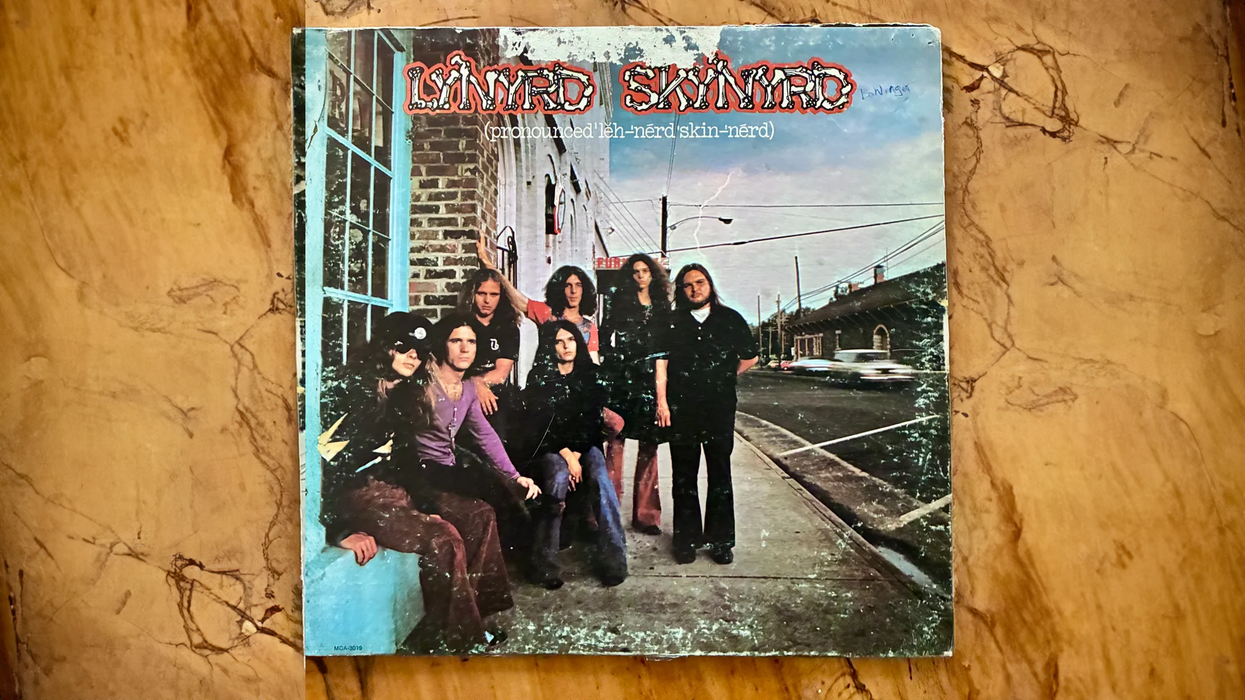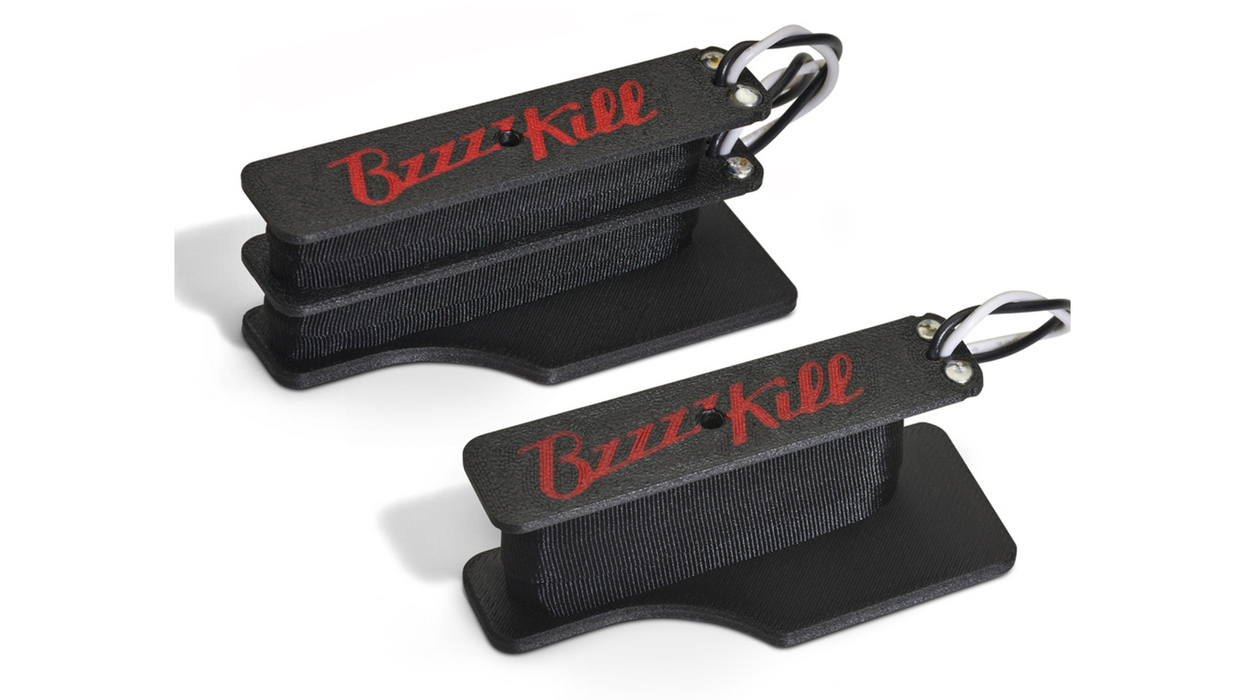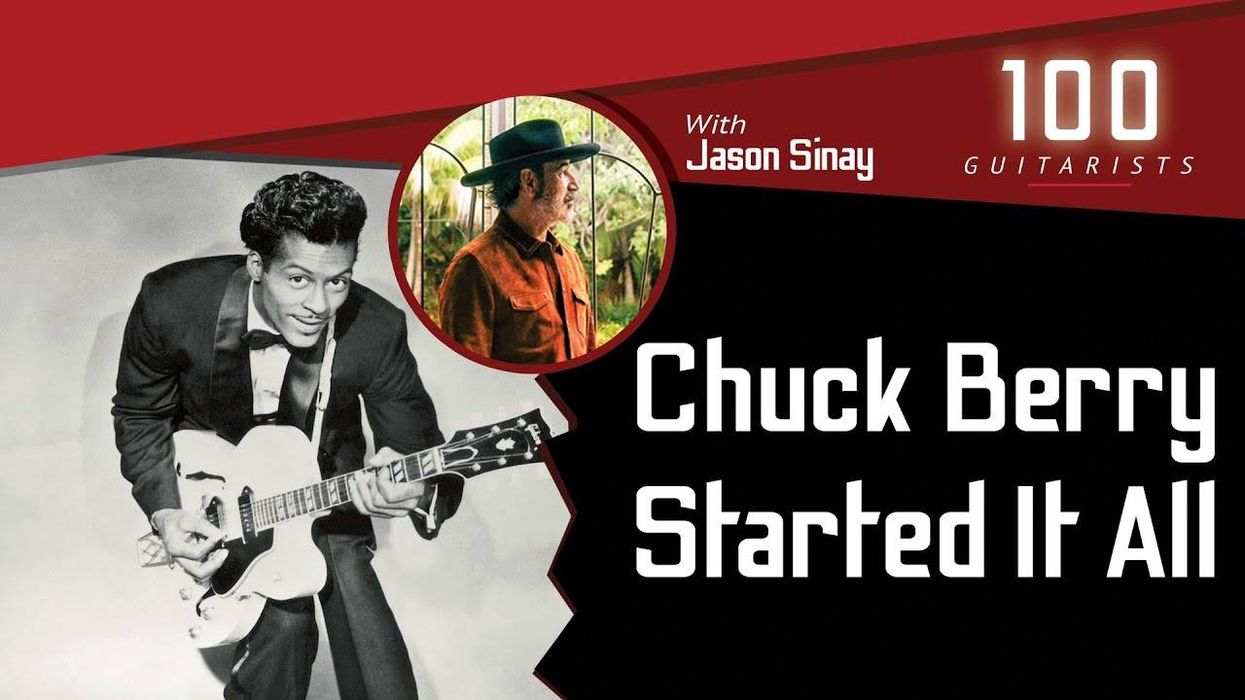Chops: Intermediate
Theory: Beginner
Lesson Overview:
• Improve your alternate picking technique.
• Learn about Rory Gallagher’s blues/rock fretwork.
• Use hammer-ons and pull-offs to create rhythmically gripping riffs.
Click here to download a printable PDF of this lesson's notation.
Even though I’m known as a more modern acoustic guitarist, I still get new inspiration and ideas from some decidedly non-acoustic players. One of my favorite guitarists was Rory Gallagher—especially the albums he made in the ’70s. To hear a bit of what I’m talking about, check out Rory’s mando playing on “Goin’ to My Hometown” below. Notice the cool open-string lines that he frequently uses to give some character to the progression.
Another stylistic influence I weave in my acoustic playing is the 21st-century psychedelic rock of Austin-based White Denim. Take a listen to “At Night in Dreams.”
The intro reminds me of Zeppelin, Black Sabbath, the Doors ... the list goes on. In this lesson, I want to show you how I adapt some of the techniques and concepts from these groups to enliven an acoustic setting. In the following examples, I’ll be taking a simple G–C riff and embellishing it with strumming, alternate picking, string-skipping, and more.
Ex. 1 starts off rather simply with a strummed G chord. Normally, I like to use heavy strings and tune down to C# for more low end, but to keep things simple, all of these examples are in standard tuning. For the most part, we’ll use a down-up-down picking pattern. Keeping this rhythm locked with the metronome will help sync both hands. We’ll add some color and style to this pattern once we have it under our fingers. It’s always a good idea to get familiar with the notes before you start adding elements on top of them.
Click here for Ex. 1
Now that we’ve laid the foundation, it’s time to add some style. Ex. 2 starts off with a 16th-note strumming pattern centered on a G chord. Simple enough. Next, we move into a series of open-string flourishes with some tasteful hammer-ons and pull-offs. Here’s where the blues-rock influence comes in. Remember that intro line in the White Denim tune?
Start by using your first and second fingers to hammer the 32nd-notes before moving to the open 4th and 3rd strings. I usually play this with an upstroke before moving back to alternate picking on beat 3. As a general rule, I use a downstroke on anything that’s “on” the beat and an upstroke for everything else. This helps lock my picking hand in with the metronome. The phrase ends with another flourish on the 4th string before ending with an open 3rd string.
Now that we have that phrase under our fingers, the rest is a walk in the park. In the second measure we start with a familiar motif (from beat 3 of the first measure) and repeat it along with a smooth 16th-note extension that fills out the measure. In the third measure, we displace the rhythm a bit by starting a 16th-note later with a pair of stabs on that G chord. Resting on beat 4 gives the phrase some space.
From there, we move to the C chord. Naturally, your hand will feel the urge to move everything up a string. For these next two measures we use alternate picking almost exclusively. Make sure to keep the single notes connected before heading back into the G chord.
Click here for Ex. 2
These are just a few examples of how you can take stylistic cues from other genres and work them into your own playing without losing the essence of your identity. Just because you’re a modern acoustic guy (like me) doesn’t mean Rory Gallagher and White Denim are off the table. Keep listening!













![Rig Rundown: Russian Circles’ Mike Sullivan [2025]](https://www.premierguitar.com/media-library/youtube.jpg?id=62303631&width=1245&height=700&quality=70&coordinates=0%2C0%2C0%2C0)













